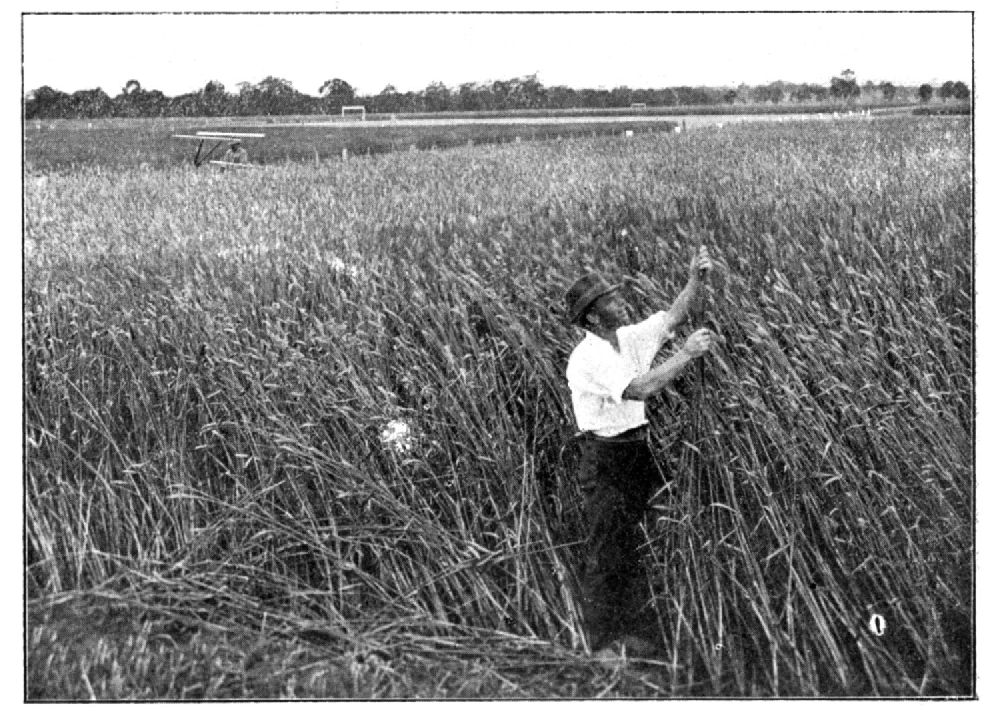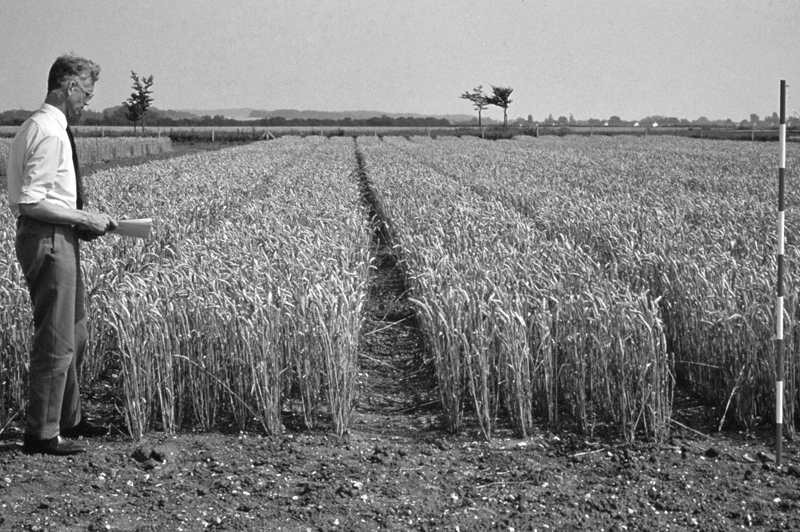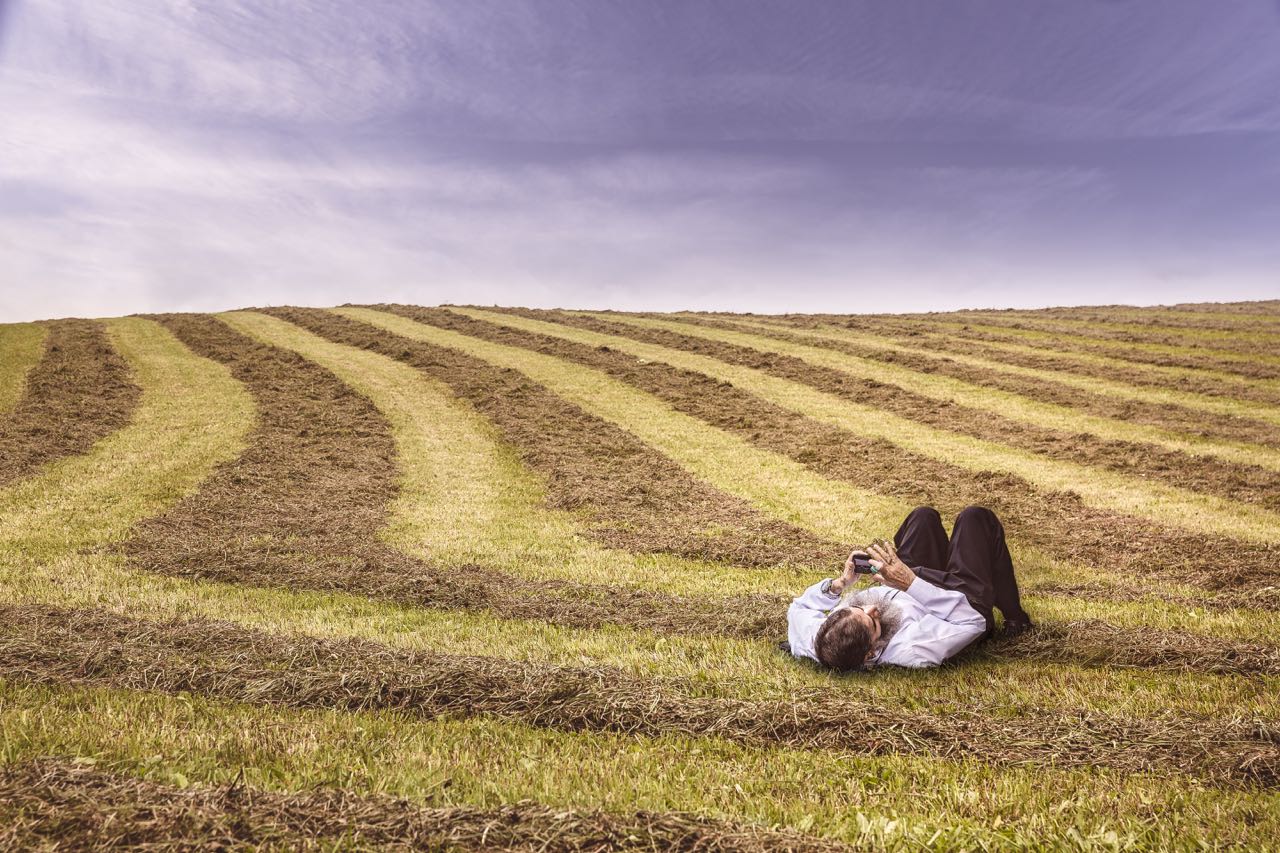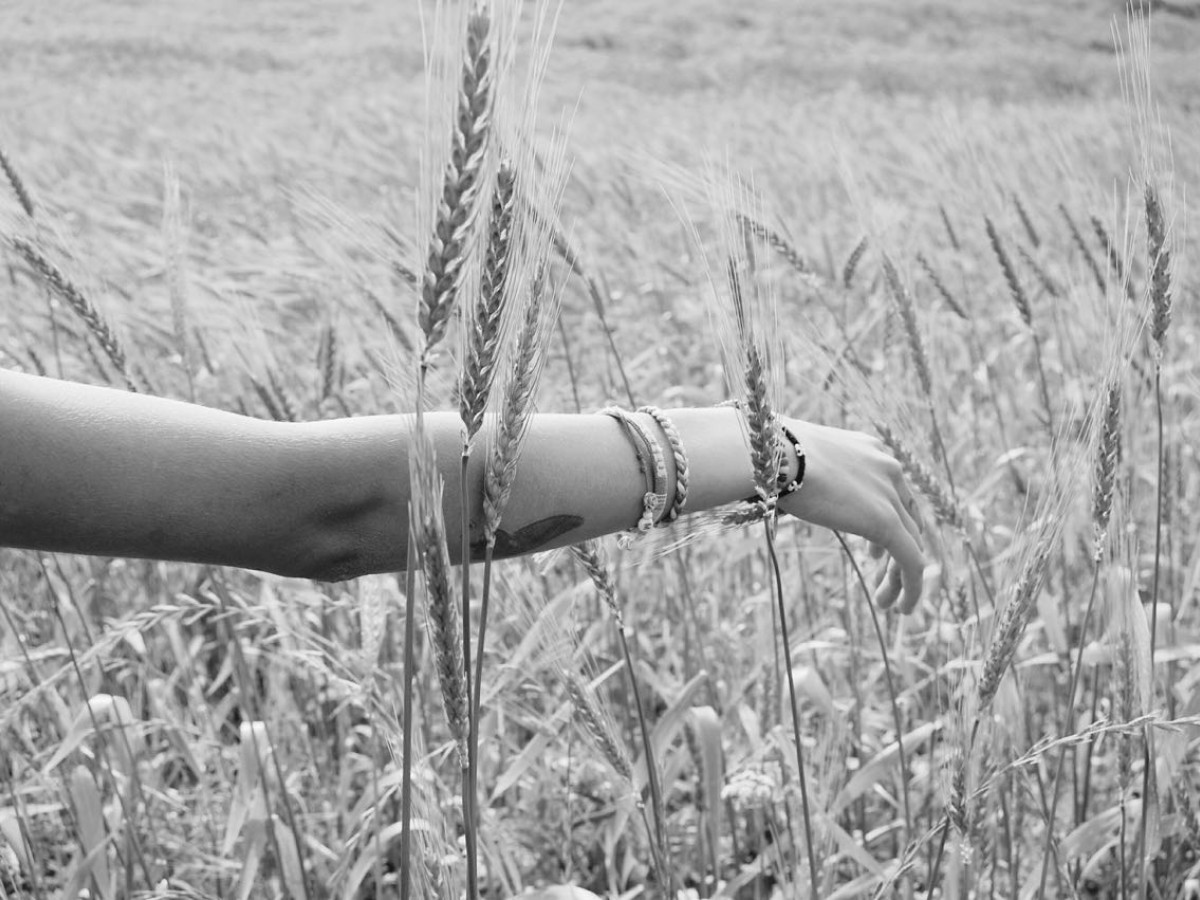The Case for a Greener Revolution.
Fixtures of agribusiness such as five-thousand-acre grain monocultures and bloated animal feedlots are no more the future of farming than eighteenth-century factories billowing black smoke are the future of manufacturing. —Dan Barber
By 2050 there will be 9.6 Billion people on this planet, the UN estimates.
So, what do we feed 9.6 Billion people? According to investigative reporter and chef Dan Barber, we feed them what their physiology expects: real food—diverse and clean.
In his book The Third Plate: Field Notes on the Future of Food, Barber lays out the case for a greener revolution that is chock full of flavor and nutrition and more food. He argues that we have fallen into a false economy when it comes to world hunger—that by focusing on swollen bellies instead of on expanding menus, we have rushed headlong into narrow-palate solutions that confuse total yield—from monocrops like wheat, corn, and soy—with total food.
Barber argues that we have essentially fattened our stomachs (for now) by flattening our palates (for good), creating an ocean of sameness out of our heartland and failing to produce the kind of food we had hoped for—the kind of food we will need in the near future.
Barber also dips his ladle into the sustainability soup, echoing Michael Pollan's concerns about the biologic and economic cul-de-sac we've created by having so many people dependent on so few crops. And having those few crops dependent on so many petrochemicals. And having those new petrochemicals escalating in use with diminishing returns, to the point that now ten calories of fossil fuel is required to produce one calorie of food.
If Barber is right , the Green Revolution will have to become a whole lot greener and more genetically diverse, if we intend to nourish—let alone feed—the world. It appears we are unlikely to solve the future with the kind of thinking that brought us the present.
Let me see if I can explain.
Wheat is Dead. Long Live Wheat.
Barber illustrates his ideas with perhaps the most symbolic crop of all: wheat, the traditional staff of life.
Wheat used to be a tall crop. Each stalk reached up to a man's chest and sometimes over his head. We wrote songs about its flexibility and loftiness: "for amber waves of grain", we sang. The root systems of our traditional varieties were formidable, reaching long tendrils of soil-stabilizing organic matter deep into the earth. Not only did these roots hold on to prodigious amounts of water, they also provided a nutritional superhighway for bacteria and fungi to do their unsung-hero work of liberating and repackaging soil-nutrients, making them available for plants. Soil was king; it was understood to be prior to food—a prerequisite—a mysterious ecosystem, requiring only water, living inputs, and the free energy of the sun. Soil was the foundation of everything.
All this was about to change.

Traditional wheat, circa 1915.
After World War II, we began using petrochemical fertilizers to boost yields nearly everywhere in agriculture. Munitions factories that had recently burned oil to produce nitrogen for bombs, pivoted seamlessly into the business of burning oil to produce nitrogen for crops.
But when it came to wheat, we encountered a problem: the stalks of this grain shot up too fast with the new fertilizers and tended to collapse under their own weight (a problem called "lodging").
Suddenly this venerable crop, which we had considered nourishing and worthwhile for millennia, didn't seem as worthwhile anymore—unless you could somehow alter it to fit the new enthusiasm for better living through chemistry. The argument for tinkering with wheat was morally leavened by the fact that people were starving in Mexico and India and anything that increased yields could only be a good thing.
The man to throw himself behind the new wheat project was Dr. Norman Borlaug—once described by Dr. William Davis, cardiologist and author of the New York Times Bestselling Wheat Belly, as "an agricultural scientist with the moral commitment of a Minnesotan Lutheran and the work ethic of a Norwegian farmer".
Borlaug sank his teeth into the wheat "problem", looking for a solution that aligned with the orthodoxy of his day: a chemically-dependent doctrine for harnessing the yield of the so called monocrop—a crop that never rotates with other crops and takes up permanent extractive residence in the soil.
After many intense and determined efforts, Borlaug produced something both remarkable and fitting, "Dwarf Wheat": a stunted and stiff variety of the amber grain, which could stand up to the new chemical fertilizers and handle the accelerated growth spurts without falling over and rotting on the ground. Like bodybuilders on steroids, everything was awesome. Until it wasn't.
Everything was awesome. Until it wasn't.

Semi-dwarf wheat, circa 1960.
First, Do No Harm.
"In biologic systems, you never know what you're doing, until you know what you're undoing," my attending physician always used to say.
He was fond of dropping this comment into the clots of medical students that formed around patient bedsides on rounds. The students would be abuzz with exotic ideas about patient care, culled straight from the splashy pages of their pharmacology texts. My teacher never failed to bring them back to earth and remind them of their prime directive, "first, do no harm".
Of course, there were a lot of "doings" in the second half of the twentieth century and we are only just beginning to understand what those doings have undone. The fate of wheat by comparison, is a small story, a mere tributary in the ramifying Zeitgeist of the times. It gets "dwarfed", for lack of a better word, by the 80,000 novel synthetic compounds we developed and dumped into the environment within a single generation and by the fever dream to gentically modify nearly everything (a dream fully realized now with the invention of CRISPR and its brave new intention to edit even humans).
Yet the small story of wheat is worth telling because it offers a big lesson in natural history.
The Undoing Effect of Dwarf Wheat.
They came with visions, seeing nothing. —Wendell Barry
In retrospect, the problems with Dwarf Wheat should have been obvious. So how come nobody noticed? Because they could only see what they were looking at: near-term yields and near-term starvation. Through that lens, any reductionistic solution would have been seen as a good one. Dwarf wheat yielded 3 times as much as its predecessors (hopped up on chemicals of course, but no matter). Mission accomplished. Case closed. It's hard to argue with a billion lives saved—even if Pandora's box was now open and even if we had only kicked the problem of world hunger down the road apiece.
Today, the problems with dwarf wheat are too conspicuous and multifarious to ignore:
For starters, Barber points out that dwarf wheat is dwarfed on both ends, not just on top. Comparatively speaking, it has a flat bottom. In fact, the root system is wimpy enough, that it not only requires chemical fertilizer to perform as advertised, it also requires three times as much water. In India, where dwarf wheat once saved so many lives and was planted with abandon, the government eventually had to sponsor huge irrigation projects to keep up with demand. That country is now trying to cope with a rapid depletion of its groundwater sources.

Water is just one unsustainable issue. The other is chemicals. Barber and his farming colleagues have demonstrated that chemical fertilizers are disastrous for soil health. In the case of dwarf wheat, the combination of chemical fertilizers with frail root systems is particularly fraught, causing the soil to become compact and degraded, requiring more and more fertilizer over time. "Once the chemicals are in use, soil organic matter falls off, and the soil is less able to transport nutrients to the plants efficiently. The result is that more chemicals are needed to get the same kick", Barber says.
To me, this sounds suspiciously like the addiction physiology of substance abuse patients. I can tell you, this kind of deranged physiology is not a pretty sight in humans, nor apparently in humus. I wouldn't be surprised if it takes about as much work to rehabilitate soil, as it does to rehabilitate an addict. If you're an organic farmer out there, trying hard to rebuild your soil after years of standard use and abuse, you have my sympathy.

The next problem with dwarf wheat may seem petty, unless you think food is something more than just fuel.
Most chefs will tell you that dwarf wheat has a comparatively flat flavor, like an Italian soda that's lost its punch. Because of this, Barber says, "we've lost the taste of wheat". And what he means by this, is that we've lost even the sensual capacity to care what's happening out there. Wheat has become just another commodity, another white powder, a vehicle for something else, a bland latticework we stretch out and puff up to form vacuous foods designed for continuous—if not quite satisfying—consumption. This creates a state of misdirection for our palate—which is historically bent on sniffing out deeply flavorful food, because in the natural world, deeply flavorful food is often synonymous with nutrient-dense food, not just calorie-dense food. We've gotten really good at growing calories; not so good at growing flavor or nutrition. This dumbing down of our palates has left us with vague cravings that don't have anywhere to go. In the end we settle for the primary colors of flavor: sugar, salt, fat.
Barber is so passionate about this, that he's dedicated a considerable portion of his career as a chef, to reintroducing diners to the taste of heirloom wheats like Einkorn, Emmer, Kamut, and most recently, a heritage cross he bred himself for its dark and sweet flavor called, what else...Barber wheat.
It's worth spending some time on this. Because how do you maximize flavor? Well, according to Barber, “The more life there is in the soil, the more potential you have for the creation of flavor”.
The more life there is in the soil, the more potential you have for the creation of flavor. —Dan Barber
At first this may sound like a riddle wrapped within a riddle, inside an enigma. Because it's not immediately clear how you go about returning "life" to the soil (although it's clear enough that it probably doesn't involve a sack of dead NPK fertilizer).
After years of working on his own farm at Blue Hill and interviewing scores of farmers who produce the best flavors in the business, Barber's view has become decidedly retro: farmers need to start planting the less-popular cover crops again, because they work together to restore fertility to the land—naturally. Cover crops for grain are things like millet, barley, oats, and rye. In order to enrich the soil methodically and artfully, farmers must plant these crops on a careful rotation schedule. The reward for practicing chemical-free crop rotation like this, is that it leaves behind deep notes of flavor: nitrogen, carbon, and microbial ecologies that will produce truly top-notch crops we covet—like wheat—in due time. This is called soil farming. Build it and they will come: the microbes, the nutrients, the flavors, the harvest.
Sounds delicious and bucolic. But can it feed the world? The short answer is yes. If you do the math right.
The Heart of the Bad Math.
Barber contends that there is no difference between growing good food and growing nature. To do one is to do the other. The more quality you put into your substrate (the soil) the more quantity you'll be putting onto your plate in the long run. Because here's the deal: focusing on the flavor and fertility of a whole agricultural system—rather than focusing on the yield of one continuous monocrop—is the thing that actually creates more food.
But you can only see this if you count all the crops—not just the crop you covet. And herein lies the miscalculation of the synthetic generation: they mistook one part of the story (the monocrop & the mono-yield) for the whole.
As Barber writes, "Here's the heart of the bad math. Barely and oats make a good meal. They are delicious and full of nutrition. So, while an acre of conventional wheat may yield more than an acre of organic wheat, that does not mean it yields more food. It just yields more wheat. The equation is missing the sum total of its parts: barley plus oats plus wheat will yield more food than wheat on its own."
While an acre of conventional wheat may yield more than an acre of organic wheat, that does not mean it yields more food. It just yields more wheat.
So, if you're going to do the math of world hunger, it looks like you have to do all the math. If population is the denominator, you have to get the numerator right: total food, not total wheat.

Big Ag Numbers Its Days
"Quantity has a quality all its own," Napoleon said. He of all people understood that quantity has a mesmerizing quality, especially if it's arranged in uniform rows and columns like troops, or spreadsheets, or horizonless fields of a single grain. Money talks. Numbers speak. They can intimidate and cow, if it suits. But the scare-mongering trope that's been telling us we must double down on monoculture and petrochemical fertilizers to feed the world, isn't landing with the same force as it used to. Perhaps the chemical cartels are approaching their Waterloo; the drums we hear are just stirring the troops for one last push.
It's worth asking then, who's out there pushing in the opposite direction? And how successful are they?
The Good, The True, and The Beautiful—in Food, Farming, Ecology, and Health.
Watch the news for a week. Watch any number of big-budget agribusiness ads. Read the rants of industry trolls across the blogosphere. You may find yourself falling under the spell of a very successful narrative that goes something like this: chemical giants and Big Ag are the only ones who have a heart for the world; organic farmers just want to take us back to the stone age, where food was scarce and we routinely starved to death.
It's a story that plays well on TV and Wall Street. But it only works if you believe organic farming hasn't evolved in the last 10,000 years, or if you decide to camp on quick studies comparing conventional and organic farming that were not conducted long enough to consider the long-latency effects of each technique on soil health and total food capacity. In other words, it's easy to keep drinking the chemical cool-aide, if you fail to recognize that there is such a thing as a larger total area under a much longer statistical curve—the kind of curve that nature has always used to measure life on this planet.
Rodale Institute of Kutztown, Pennsylvania has been measuring this curve for over 30 years. The results are in:
-
Organic yields match conventional yields.
-
Organic outperforms conventional in years of drought.
-
Organic farming systems build rather than deplete soil organic matter, making it a more sustainable system.
-
Organic farming uses 45% less energy and is more efficient.
-
Conventional systems produce 40% more greenhouse gases.
-
Organic farming systems are more profitable than conventional (more profitable for the farmer, not necessarily for corporations).
-
You can read the entire 30-year report here
Here's a brief description of the Rodale Farming Systems Trial, provided by the Institute on its website:
"The Farming Systems Trial (FST)® at Rodale Institute is America’s longest running, side-by-side comparison of organic and chemical agriculture. Started in 1981 to study what happens during the transition from chemical to organic agriculture, the FST surprised a food community that still scoffed at organic practices. After an initial decline in yields during the first few years of transition, the organic system soon rebounded to match or surpass the conventional system. Over time, FST became a comparison between the long term potential of the two systems."
When I first read this, I was curious about the "initial decline" and then rebound of organic vs. conventional farming. Why would that be? Turns out, it's a question of biologic momentum.
Chemical farming denudes soil organic matter over time, requiring more and more chemical treatments to produce the same yields. Organic and beyond-organic techniques, like permaculture, build soil organic matter over time, such that soil fertility gains momentum, instead of losing ground, so to speak. The land gets better with time, like wine.
This virtuous cycle only happens when farmers think of soil as their first crop, when they grow soil first, crops second—the order that nature has selected. This takes more time, but once it gets going, it achieves a kind of biologic momentum, much like a flywheel, taking less input—instead of more—to keep going.
We all want to keep going. And it looks like we'll need to do it with less flailing and spraying than we do now. So it's good to know it's not technologic efficiency we're really after, it's biologic efficiency—with its inherent diversity and densely absorbent and productive ecologies. That's our best shot to make good in a future of increasingly unpredictable weather patterns, more expensive oil, and more people. Because genetic diversity has always been nature's favored way of coping with the unknown.
We can do this. We already are.
Growing Humans by Growing Nature.
The best and brightest ideas in organic farming are converging now under a rubric called Agroecology. It's a scientific framework for doing what I think we've wanted to do all along, but didn't know exactly how: to grow humans by growing nature.
According to a report from the United Nations, Agroecological farming methods could double global food production in just 10 years (De Schutter 2011).
Pablo Tittonell, professor of Farming Systems Ecology at Wageningen University and one of the worlds most famous experts in the field of agriculture and ecology, gives an inspiring TED talk on this subject. I have found myself watching it several times: Feeding the world with Agroecology (2014):
If Agroecology takes off, the agricultural system of the future will be more resilient; it will have the bounce-back qualities of a spider's web, because it will be multi-crop, multi-layered, interconnected and interspecies. If Dan Barber is right, this will not only produce more food, but more flavorful and nutritious food.
Genetic diversity is the central strategy of Agroecology because it's the central strategy of nature, helping farmers absorb unexpected hits from the environment without repeating the crop failures of yesteryear.
Good thing. Because we can't afford to repeat—on a global scale—the monoculture crisis that killed one in eight Irish in the 1800's. Or the widespread corn blight of the 1970's, which is attributed to the fact that 85-90% of the corn grown at that time, uniformly contained a gene that made it easier to breed, but whoops, also made it more susceptible to fungus. Relying on monoculture to feed the world all at once can easily unfeed the world all at once. It's like packing a picnic basket full of raw eggs; one drop and lunch is mush.
But history need not repeat itself. We are getting better at this. We are learning how to grow ourselves, by growing nature.
What Can I Do?
The realization that we can not only feed the world, but feed it well, is a welcome relief to the prevailing narrative of chemical consolidation, creeping sameness, and scarcity.
Even though there are monied interests pushing chemical monoculture as hard as ever these days, we can now see the cracks in that monolith and the real alternatives on the other side. In retrospect, the Green Revolution is looking a little brown and fetid, as NPK fertilizers continue to run off into the Gulf of Mexico, creating a dead zone the size of New Jersey. Satellites can see this, even if naysayers can't.
Change may seem impossible, but it's not. Because who has more money than MegaChem, USA? We do. Consumers. And we can use our Archimedes lever of money to move the world. Free markets have always been fairly good at delivering the things we want (sometimes to our metabolic chagrin). And now that we want better things; they will follow, slowly or quickly, depending on us.
And it really does depend on us. Because we can't expect farmers to grow cover crops, if there's no market for cover crops. If our taste buds don't have the bandwidth to eat millet, buckwheat, barley, oats, and rye, then farmers won't bother growing them. Would you? This is why Dan Barber serves "Rotation Risotto" at his restaurant: a porridge of rye, barley, buckwheat, and millet to inspire eaters and cooks alike to celebrate variety over sameness. (And to hopefully send a reassuring signal to farmers that more and more people are ready for total food.)
Previously, I've given you a number of links to help you tap into the bounty of organic and beyond-organic farms in your area. I'm listing them again here. But keep in mind that "organic" is just a label—a good label—but one that requires a lot of USDA red tape and expense for farmers to obtain, because the regulatory game favors industrial-scale farming.
That means many small farmers are organic in all but name. So Face-Certification—you being able to look your farmer in the eye and ask him about his soil practices (like at a farmer's market)—is just as good as organic certification, possibly better, because many small farmers go above and beyond the USDA Organic requirements, using permaculture and biodynamic techniques to create richer soil ecosystems than required.
Bottom line: know your farmer. If you don't know your farmer, read labels and choose organic when you can.
Find a Farmer Near You:
Central Oregon Farm-to-Table Links:
- Agricultural Connections
- Central Oregon Locavore Marketplace
- Central Oregon Locavore CSA Pickups
- Rainshadow Organics Organic Wheat!
- Volcano Veggies
One last thing: Does buying organic make you feel like an elitist? Well, that's another narrative you've picked up from somewhere. Turn it around. Because the only thing more elitist than a few humans wanting clean food, is a few humans owning the food supply through chemistry and patented genes—truly the privilege of a few. Go in peace. Make good choices for yourself and the world. I'll see you out there.
Yours in Health & Resilience,
Marc Wagner, MD, MPH.
What to Read Next:
- Why I Focus on Food: How a broader palate and more food experience can improve your health and the health of the planet.
